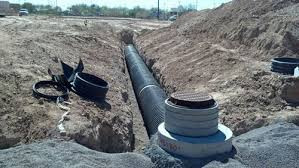
By Mike Juru It is common knowledge that ignorance of the law is no defence of the law. As such, all persons and organisations are expected to abide by the laws. Sadly, developments on the ground give the assertion that very few people are aware of Environmental Rights as provided in the Constitution of Zimbabwe, which is the supreme law of the land. Any law, practice, custom, or conduct inconsistent with the constitution is deemed invalid.
Ironically, environmental issues have been perceived to be related only to Environmental Management Agency (EMA), which oversees the Environmental Management Act. In reality, this powerful and necessary Act is actually supported through Section 73 of our constitution on environmental rights which reads:
Every person has the right –
To an environment that is not harmful to their health or well-being, and
To have the environment protected for the benefit of present and future generations, through reasonable legislative and other measures that –
Prevent pollution and ecological degradation;
Promote conservation: and
Secure ecologically sustainable development and use of natural resources while promoting economic and social development.
- Chamisa under fire over US$120K donation
- Mavhunga puts DeMbare into Chibuku quarterfinals
- Pension funds bet on Cabora Bassa oilfields
- Councils defy govt fire tender directive
Keep Reading
The state must take reasonable legislative and other measures, within the limits of the resources available to it, to achieve the progressive realisation of the rights set out in this section”
These rights, outlined in the Environmental Management Act (Chapter 20:27) of 2002, were incorporated into the national constitution in 2013. The alignment of the Environmental Management Act with the national constitution is a major stride in the history of environmental governance and natural resources management in Zimbabwe and beyond. Nevertheless, rights do not necessarily mean just access and control but stewardship, which is the obligation and ethic to protect and sustain, in this case, the environment and its endowments and assets.
While constitutional law experts may play a critical role in the interpretation of the section, environmentalists also have a clear interest in it, however, it is those that impact or get impacted by environmental issues that require a deeper understanding of the provision to embrace the obligations and need to protect human life.
It is a shared global observation that real estate by its nature is wholly dependent on the natural environment and the above-mentioned constitutional provision demands that real estate stakeholders play their part in upholding the laws.
The property development process lies at the heart of the production of the built environment, thus having the greatest impact on the natural environment. There is so much conflicting interest in property development and environmental preservation and the concern is increasing among individuals, developers, and government about the environment. On a global scale, the United Nations sustainable development goal— SDG 13 — speaks of climate action towards a green environment. This is why the spotlight is on the real estate industry to make environmental considerations in their efforts.
Back home, a requirement for an Environmental Impact Assessment report to be approved before any development takes place, accompanied by an Environmental Management Plan is a game changer as it necessitates compliance with the law, and the preservation of the environment. Others may view this legislature as anti-progress, but that is the price of achieving the all-important sustainable development goals (SDGs).
However, in order to achieve the SDGs, there is a need to address the ambiguous roles of the professionals, users, owners, investors, government, and regulatory bodies involved in our environmental matters.
The 21st century has been a century of rapid population growth, economic development, and environmental change, especially in emerging economies where industrialisation is still a work in progress. Lately, the environmental stress associated with development is becoming a pertinent issue not only for governments but also for the financial and corporate world. While a lot of literature has been documented to echo Zimbabwe’s commitment to achieving sustainable development goals, the question that needs to be answered is whether this understanding and resolve have been translated into action. Unfortunately, our stakeholders still have a lot of work to do in preserving natural wealth. Despite the fact that powerful laws are in place to control and save the environment, the devil lies in the application and enforcement of environmental laws.
Post-2008, Zimbabwe’s rapid economic growth placed tremendous stress on the limited infrastructure, especially in urban areas. This is why the infrastructure sector has received increased attention from both the government and the private sector, resulting in increased spending on public infrastructure and the encouragement of public private partnerships (triple Ps). The real estate sector is a big part of this infrastructure sector. The importance of this sector lies not only in the fact that it is among the largest GDP contributors but also in the manner in which it has emerged as an integral part of every common man’s dream. The emerging middle class in the country with high aspirations for an elite urban lifestyle, access to loan capital, and increasing disposable incomes, drives the demand for integrated township developments across the country’s urban landscape inadvertently at the expense of fertile agricultural land and natural environment endowments.
While real estate as an industry is advocating for rapid urbanisation as a measure to lessen the housing backlog that is prevalent, urbanisation has been considered one of the prevalent causes of cultivable land loss, habitat destruction, and declining natural vegetation cover. The transformation of rural lands to urban areas is currently occurring at an unprecedented rate in recent human history and is having a prominent effect on the natural functioning of ecosystems. Although urban areas currently cover only 3% of the earth’s land surface, their speedy expansion has affected the environment at both local and global scales and to some extent enhanced climate change. Change in land use due to human activities is at this time proceeding more rapidly in developing than in developed countries, and it had been projected that by 2030, most of the world’s mega-cities will be found in developing countries (UN-Habitat, 2008/2009). In order to lessen the detrimental effects associated with urbanisation on the environment and keep the optimal ecosystem functioning, the formulation of appropriate laws and regulations is extremely important, taking into consideration rational economic, social and environmental concerns.
This is why global pacesetters (China, the United States, Canada, etc) regional giants (South Africa, Rwanda, Kenya, etc), and emerging global giants, including India adopted green building standards as a sustainable development tool, and to mitigate against the negative impact of urbanisation and rural industrialisation on their environments.
The real estate boom seen on the outskirts of most cities in Zimbabwe and coupled with infrastructure growth has triggered various environmental concerns ranging from increased air pollution to declines in annual agricultural yield. Each year has seen the continuous rise of carbon concentrates in the atmosphere, particularly in populated urban sprawls where air quality measures may have fallen below the safety standards which may result in chronic illnesses.
Controlled development should be considered in the planning to check the undesirable side effects of land development growth, for instance, pollution, congestion, social crime, environmental disaster, and loss of social solidarity. In this regard, poor institutional inabilities are posing threat to implementing regulations and managing natural resources.
The list of aspects of environmental concern is not limited to the above as there are land contamination issues, waste management concerns, dangerous gas emissions, etc, that cannot be ignored
The question to be answered is what the real estate sector should do to comply with the provisions of the laws seeing that all economic activities take place in the built environment. The basic theorem applies where businesses need people to produce and at the same time the customers to purchase their products. It is thus critical for businesses to ensure the survival of human beings by establishing a sustainable equilibrium. Human beings require water, air, and energy from the environment, and it is imperative for businesses to ensure the environment is protected and preserved to give life and sustainability across the economic value chain, paying particular attention to agriculture, mining, and real estate sectors.
In real estate, green building standards that support the environmental management interventions can be classified from a development stages perspective, covering pre-construction, construction, and post-construction. The design stage incorporates sustainable urban design and sustainable architectural design that incorporate energy-saving mechanisms. The construction stage embraces the use of local materials and proper management of construction waste and further, sustainable developments in the form of green villages. The post-construction stage includes sustainable valuations to ascertain the value of sustainable initiatives, and green leasing on the management of the final product. Above all, Sustainability reporting for listed companies should be a must for all organizations to ensure accountability and transparency in environmental preservation in compliance with our Constitution, UN SDGs, and above all, for the future generations. The time to act is NOW.
- Mike E. Juru is the CEO of Integrated Properties. The views expressed in this column are his own and in no way reflect the thinking of the various professional bodies and associations that he works with. Mike can be contacted on [email protected]










